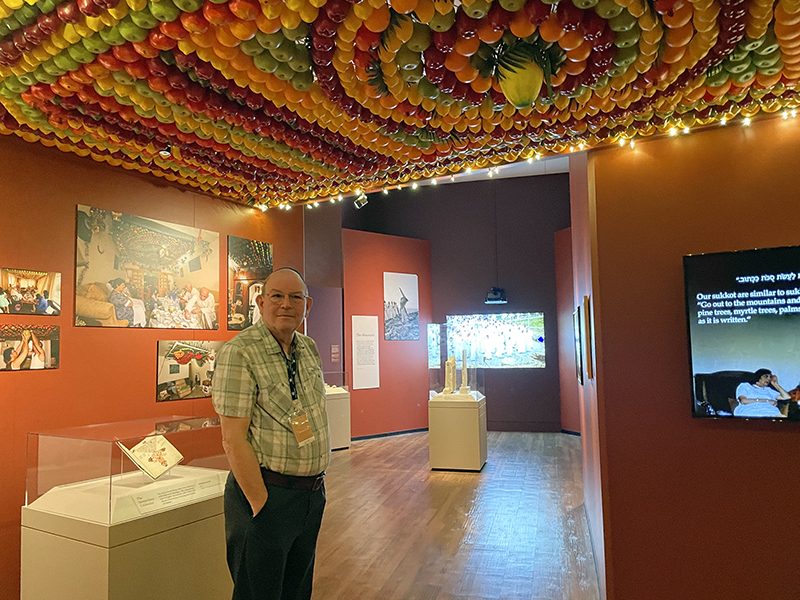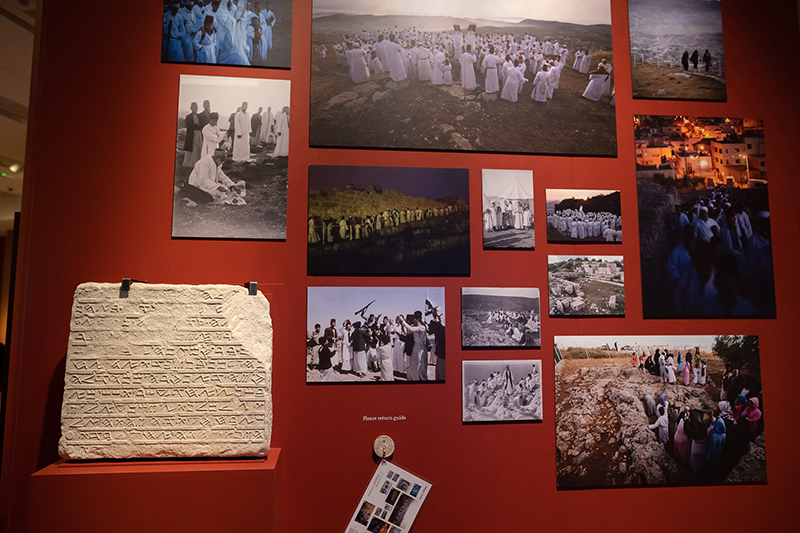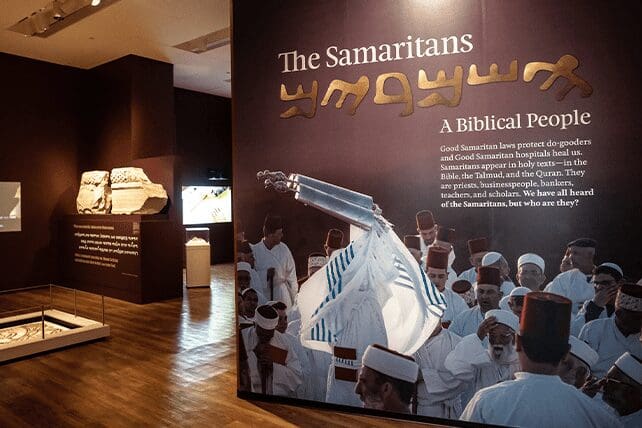(RNS) — Growing up, when Steven Fine learned about the Kutim, the Samaritans, in the Talmud, the references “went in this ear and out the other.” In 1977, he met a Samaritan for the first time at one of the salons the late Jewish folklorist and Hebrew University professor Dov Noy hosted — “Every week, it was like going to the all-star game!” — but he didn’t meet just any Samaritan that day. Benny Tsedaka, who remains a friend, was the son of the community’s leader.
Suddenly, that biblical people — best known for the protagonist in Jesus’ famous parable of The Good Samaritan — became real to Fine, a college sophomore at the time.
Now a professor of Jewish history at Yeshiva University, Fine still has that biblical people on the brain, and Samaritans are having something of a cultural moment.
Fine co-curated the exhibit “The Samaritans: A Biblical People,” which opened Sept. 16 at the Museum of the Bible in Washington, and edited a new scholarly volume of the same title. He was academic adviser to the first-ever Samaritan cookbook in 2020 and to a new documentary about Samaritans by filmmaker Moshe Alafi.

Steven Fine at the sukkah in the Samaritan exhibit at the Museum of the Bible. Photo by Menachem Wecker
Also in 2022, the superhero film “Samaritan” starring Sylvester Stallone ostensibly pits — without too many spoilers — the good-guy Samaritan against evil brother Nemesis. The film takes for granted that viewers recognize the reference from Luke’s gospel.
In his parable, Jesus tells of a “certain Samaritan” who tends to the wounds of a man, whom bandits left for dead. Though a priest and Levite pass the victim by, the Samaritan loads him on his animal, takes him to an inn and settles with the innkeeper.
“Which of these three do you think was a neighbor to the man who fell into the hands of robbers?” Jesus asks, per the New International Version.
Today, every state in America has a version of a “Good Samaritan Law,” shielding those who provide emergency treatment from most malpractice suits. In an unlikely turn of fate, Tzili Charney, widow of Leon Charney, who was instrumental in creating New York’s Good Samaritan Law, has supported many of Fine’s Samaritan projects.

Photos of the Samaritan community on display at the Museum of the Bible. Photo courtesy of Museum of the Bible
Jeffrey Kloha, chief curatorial officer at the Bible Museum, cites the “Seinfeld” episode, in which the main characters are arrested under a Good Samaritan Law for not helping someone in need. “The Samaritans were an ancient tribe — very helpful to people,” Kramer (Michael Richards) explains. Kloha laughs off the latter clause but corrects the tense of the former. The Samaritans are not a relic of the past, but a living people.
That is the main lesson Fine and exhibit co-curator Jesse Abelman, the museum’s Hebraica and Judaica curator, hope visitors will take away from the show.
In an interview at the Bible Museum, which mostly transpired in Hebrew with a translator present, Yefet Tsedaka — whose brother Fine met in 1977 — said the Samaritan community is pleased with the exhibit, with which it was very involved.

